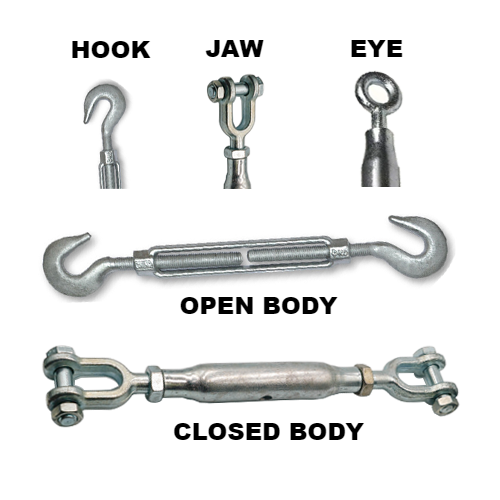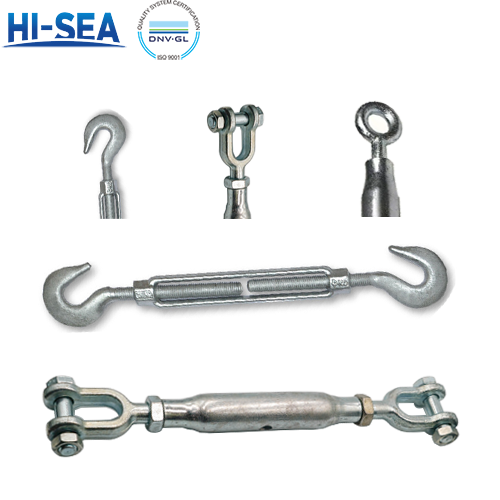
What Is a Turnbuckle?
A turnbuckle is a device used to adjust the tension or length of ropes, cables, tie rods, and other tensioning systems.
It typically consists of three primary components: a body, a right-hand threaded end fitting, and a left-hand threaded end fitting. By rotating the body, the distance between the two end points can be adjusted, either increasing or decreasing the tension in the system.
Turnbuckles are commonly used in applications such as construction, ship rigging, and sports equipment.
Overview
Types of turnbuckles
There are open body and closed body. For an open body turnbuckle, the threads are visible through the body frame.
There are three main types of end fittings: hook, jaw and eye. They can be used together in any combination on either end of the turnbuckle, such as jaw and jaw, eye and jaw, hook and eye, etc.
Hook end fitting are easy to quickly connect and disconnect. They are used to create temporary connections.
Jaw end fitting consists of a jaw and bolt secured together by a nut or a pin. They are easily opend and are used to connect to components that are enclosed, such as an eye bolt.
Eye end fitting is a closed loop that can be connected to a shackle or quick link. It is used for occasions where disassembly is not frequent.

Required information for turnbuckle order
1. Standard and type of turnbuckle
2. Material
3. Finish
4. Specification
5. working load limit (WLL)
6. Qty





